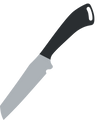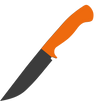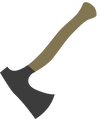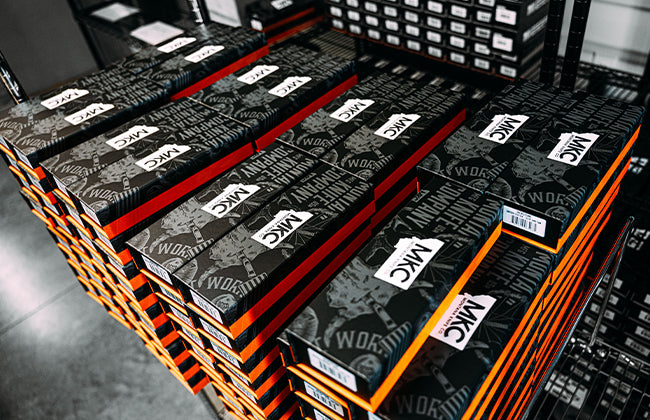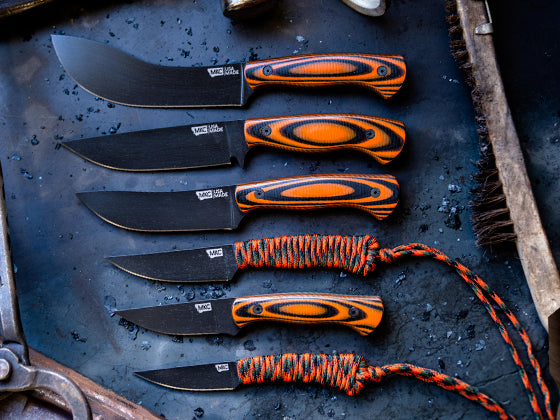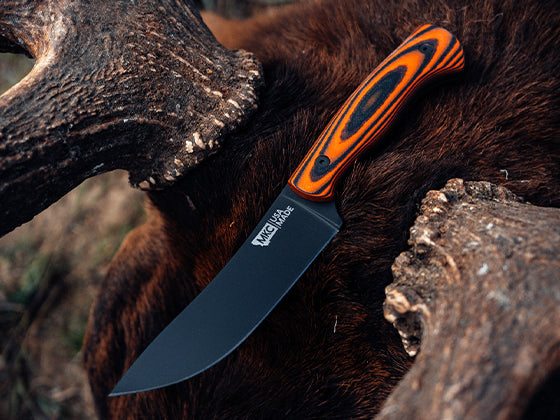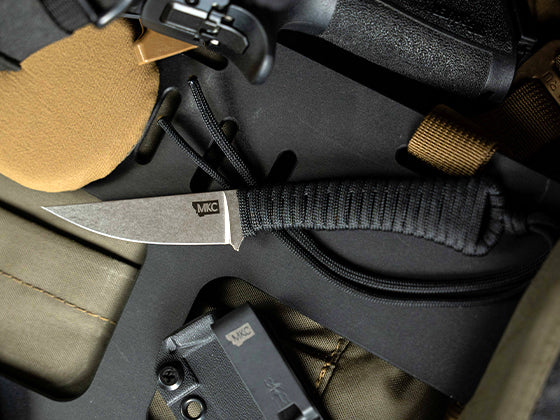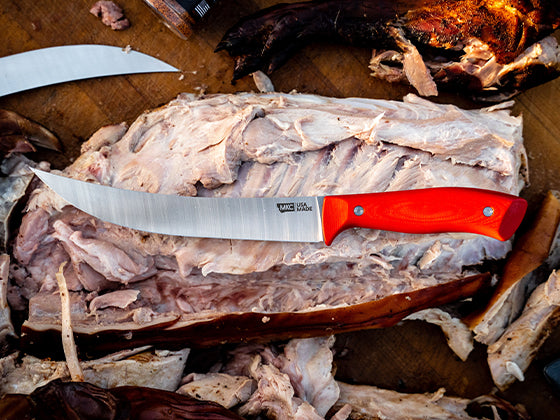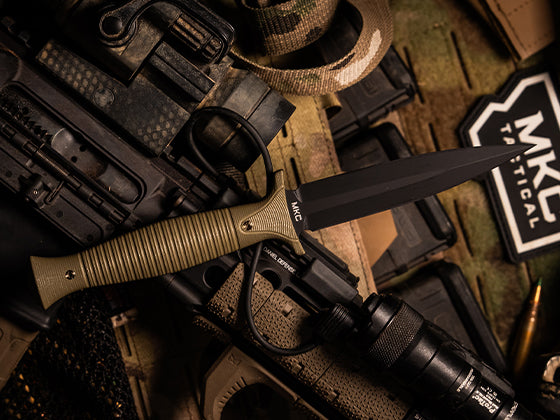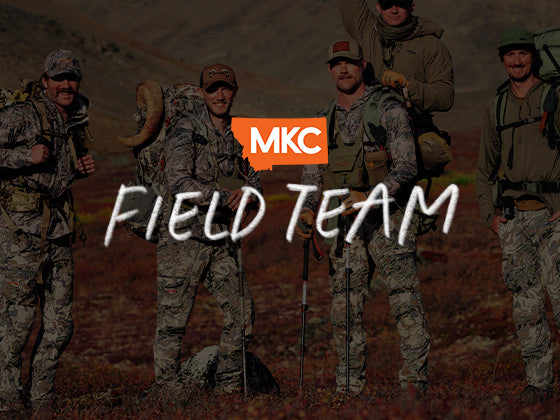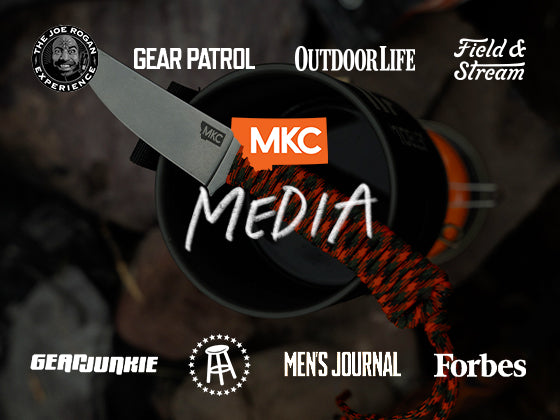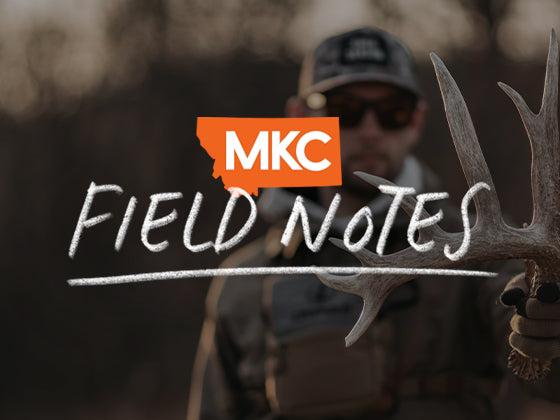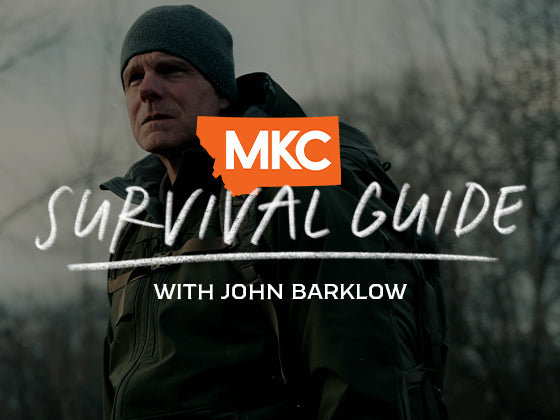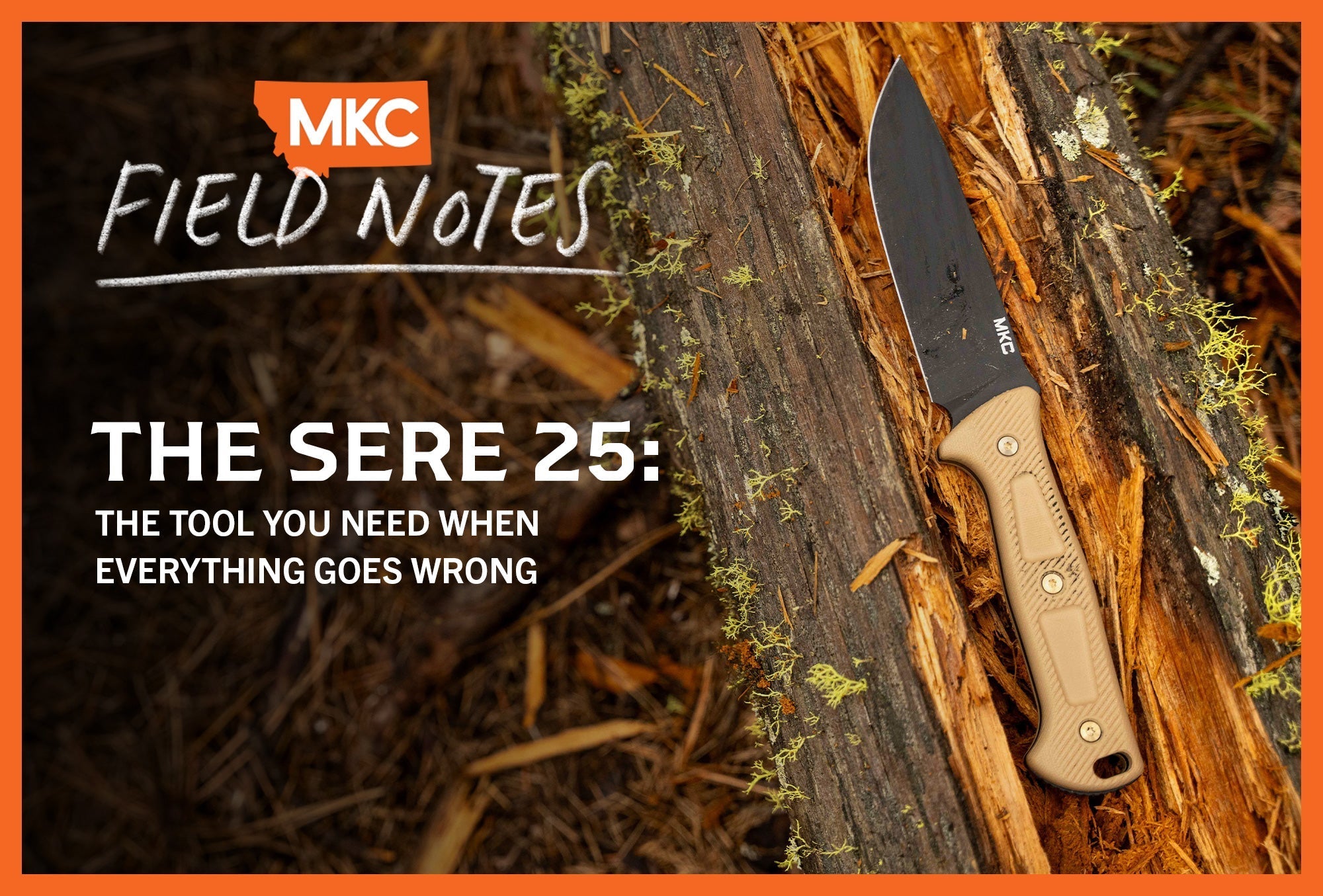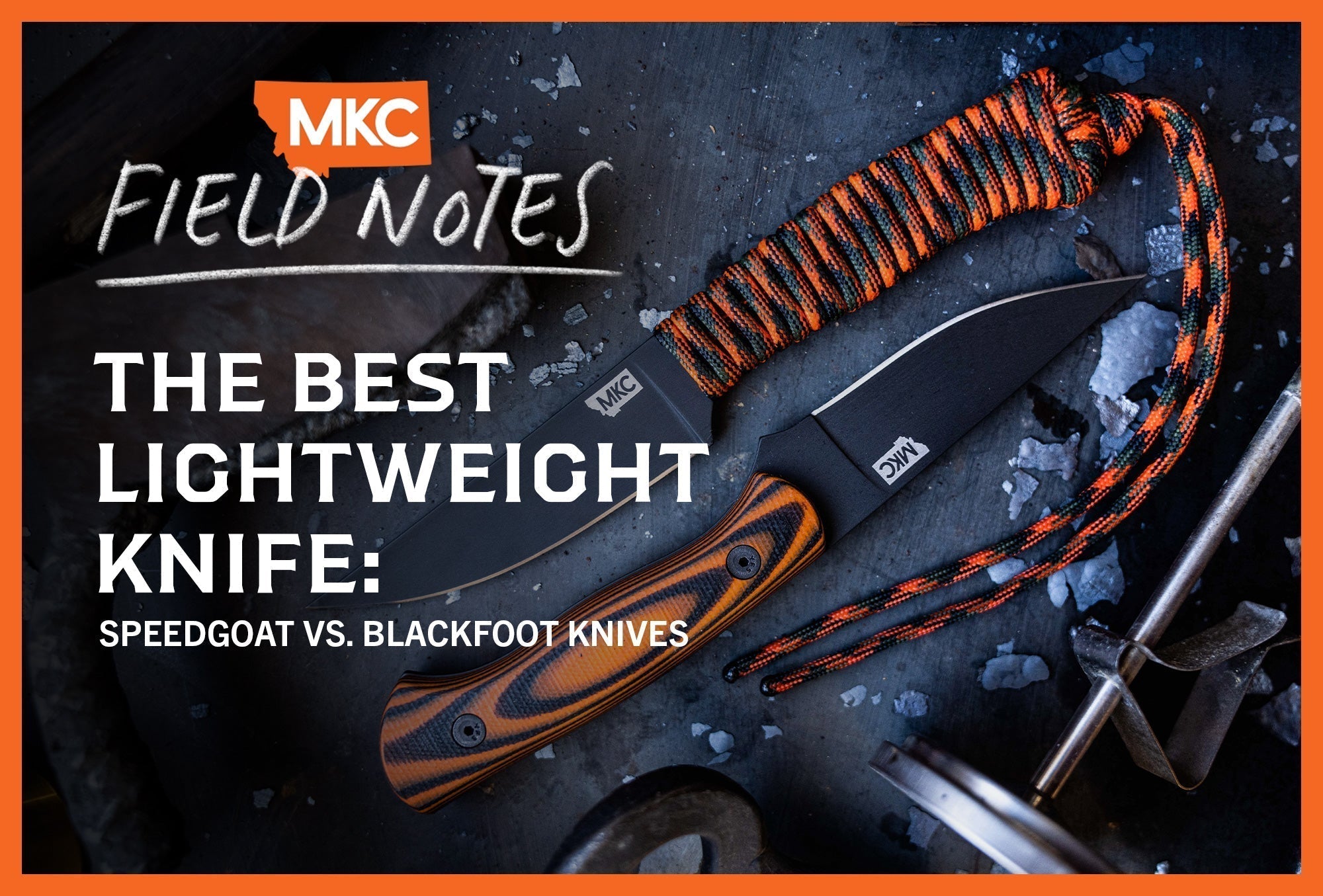A good knife is a multi-tool in its own right, and the blade isn’t the only functional part. Paracord handles, like the one on our Speedgoat knife, add even more versatility and usability.
We designed the Speedgoat to be as light as possible. At one point, we considered wrapping it in rawhide, which is very lightweight and would’ve given the Speedgoat a vintage look. Unfortunately, the rawhide added little functionality.
We also experimented with skeletonizing our usual G10 and carbon-fiber handles. Finally, we considered not putting any padding there. Would the Speedgoat still be usable with a Cerakoted blade and an uncovered metal handle?
In each case, we would achieve the ultralight weight we sought, but with zero added functionality. By comparison, paracord adds an entirely new tool set (and extra comfort) for just a few ounces, and the countless uses for paracord bring a new level of convenience to your outdoor adventure.
Survival Uses for Paracord
While a seven-foot-long paracord might seem innocuous, its many lifesaving uses make it a nonnegotiable part of your survival kit.
Here are just a few survival-centered paracord uses:
- The paracord’s center strands can create a makeshift fishing line (hook not included). Just unravel it and tie the thin inner strands together until you achieve the length you need.
- In a life-or-death scenario, use the paracord to lower yourself or an object down from a tree, rock, or cliff. (Our paracord can support up to 550 pounds.)
- Try using your paracord to build a bow drill and start a fire.
- Use paracord to rig up a temporary shelter or set up a snare trap to catch food.
- Paracord can act as a towline for lightweight watercraft.
- You can use paracord to create a gill net if fishing with a hook isn’t your cup of tea.
First-Aid Uses for Paracord
Large and small accidents happen all the time out in the backwoods. While a first-aid kit is the preferable solution, paracord has first-aid uses, too:
- To stabilize a broken bone, use paracord to rig up a sling or a splint.
- Lace paracord between two long, sturdy tree limbs to build a handmade stretcher.
- In a worst-case scenario, paracord can act as a makeshift tourniquet for severe injuries. (If possible, please keep an actual tourniquet in your pack, as paracord’s concentrated pressure damages tissues quickly.)
Camping Uses for Paracord
Rope is helpful to have at camp, but if you run short, lose yours, or forget to bring it, a length of paracord is a suitable replacement.
Uses for paracord when camping include:
- Guying out a tent
- Hanging a light
- Stretching a drying line for wet gear and clothes
- Repairing a shelter
- Bundling firewood
- Hanging meat where animals can’t reach
- Securing loads inside or on top of your vehicle to prevent them from jostling around
- Tying your kayak or canoe to shore
- Creating a makeshift tripwire to alert yourself and your campmates to approaching bears, deer, or other creatures
- Creating a walking stick — choose a sturdy, straight stick, then wrap the handle with paracord to keep it comfortable and splinter-free
- Hanging an existing hammock
- Improvising a stringer to keep your fish fresh longer
Convenient Uses for Paracord
Not all paracord uses are lifesaving. Some are just plain convenient.
The following paracord uses improve unpleasant backwoods scenarios:
- Paracord strands make great sewing thread in a pinch. Just unravel it and use the inner threads to restitch your cloth goods.
- Use paracord to replace a broken boot lace. It makes a big difference on a long walk back to camp.
- If your rifle sling busts, rig a new sling with paracord to free up an arm. This is especially handy when packing out an animal.
- Use paracord to tie meat or antlers securely to your pack. Some hunters like to cut a tree branch and lay it across their pack, then tie the antlers to the branch to keep them from flopping around.
- A Speedgoat owner told me he once used his paracord to cinch his rain pants tight around his boots when crossing a river. You could use it in place of a belt, too, if you pack some loose pants.
- Because the Speedgoat features seven feet of paracord, you can use it as a measurement tool in a pinch.
- Having trouble getting your water bottle or bear canister open? Use your paracord as a friction wrench. It can help you get that extra grip on tight containers or in cold weather when fingers don’t function well.
- If you bring animals into the backwoods with you, your spare paracord can make a handy lead or halter.
Tying a large deer’s or elk’s legs apart with paracord makes the field-dressing process easier.

A Paracord-Wrapped Knife: The Ultimate Survival Tool
Thanks to the endless uses for paracord, the Speedgoat is an adaptable survival tool. Every Speedgoat, even the miniature variation, comes wrapped in seven feet of paracord.
MKC knife owners raved about the Speedgoat’s paracord handle so much that we added it to other blades, too. If you choose the Stoned Goat or the Triumph SL, you’ll always have that paracord handy.
How will you use your paracord on your next adventure? Let us know!
by Josh Smith, Master Bladesmith and Founder of Montana Knife Company








